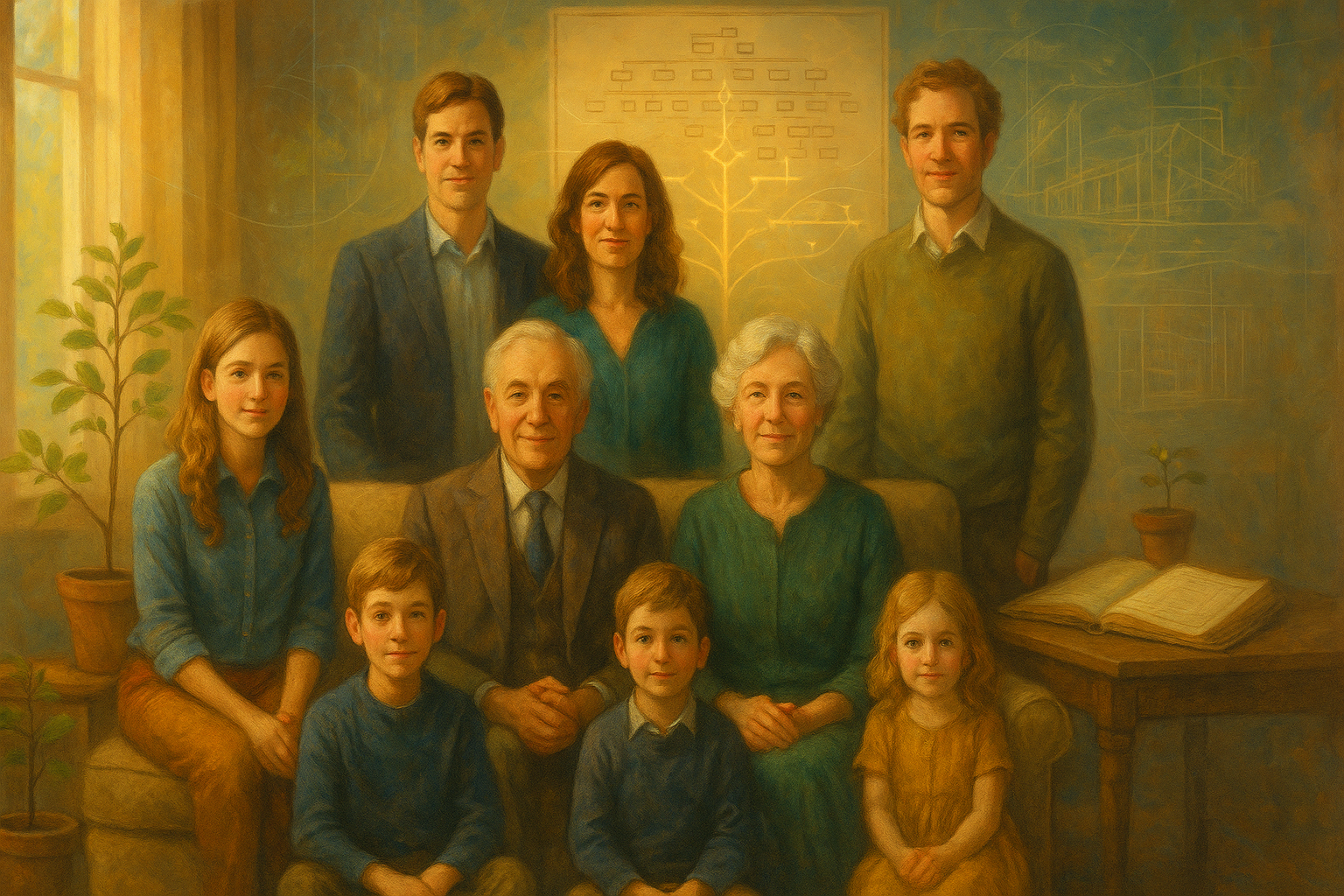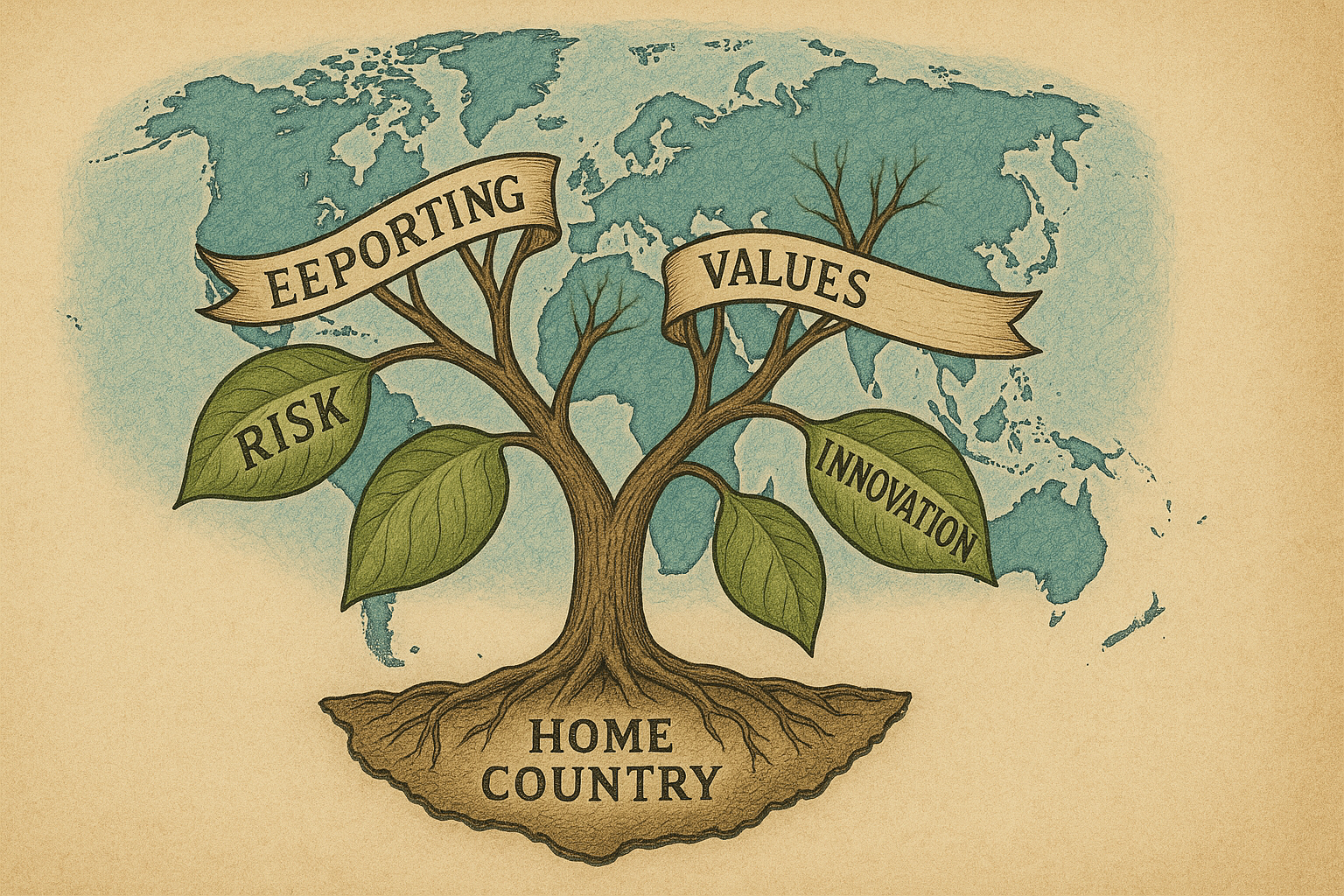What strategies help new family CEOs turn succession into renewal?
Matthias Waldkirch, Reimar Belschner, Nadine Kammerlander
Audio > Play / Stop
CeFEO's Authors
CeFEO counts more than 50 scholars and 30 affiliated researchers. Several studies and reports have consistently identified CeFEO as a leading research environment worldwide in the area of ownership and family business studies.
This research project, has been co-authored by the following CeFEO Members.
Reference
Spotlight highlights research-based findings only. If you’re interested in exploring this project further or delving into the theoretical and methodological details, we encourage you to contact the authors or read the full article for a comprehensive understanding.

Waldkirch, M., Belschner, R., & Kammerlander, N. (2025). Taking charge: A configurational perspective on post-succession change in family firms. Entrepreneurship Theory and Practice, 49(4), 992–1036.
https://doi.org/10.1177/10422587251322888

What is Spotlight?
Spotlight is an innovative online family business magazine designed to bridge the gap between cutting-edge research and the real-world needs of practitioners, owners, and policymakers. Drawing on the latest findings from the Centre for Family Entrepreneurship and Ownership (CeFEO) at Jönköping International Business School, Spotlight delivers insightful, accessible summaries of key research topics. Our mission is to keep the family business community informed and empowered by offering actionable insights, expert analyses, and forward-thinking strategies that enhance business leadership and ownership practices for long-term success.

This article is brought to you by the WIFU Foundation
Spotlight is generously supported by the WIFU Foundation, which promotes research, education, and dialogue in the field of family business. This partnership enables us to continue bridging academic insights and real-world practice for the advancement of responsible family entrepreneurship and ownership.
How new family CEOs drive change after succession
Stepping into the role of CEO in a family business is never just a career move — it’s stepping into history. The new leader inherits not only the company’s operations but also the weight of family traditions, relationships, and legacies. This study shows that how much change happens after succession doesn’t depend only on the successor’s personality. It’s shaped by the structural setup they find: how much power they hold, how close they are to the predecessor, and whether the business urgently needs change. By studying 43 successions in German family firms, researchers identified three pathways — authority, empowerment, and alignment — each with its own risks and rewards.
Stepping into the role of CEO in a family business is never just a career move — it’s stepping into history. The new leader inherits not only the company’s operations but also the weight of family traditions, relationships, and legacies. This study shows that how much change happens after succession doesn’t depend only on the successor’s personality. It’s shaped by the structural setup they find: how much power they hold, how close they are to the predecessor, and whether the business urgently needs change. By studying 43 successions in German family firms, researchers identified three pathways — authority, empowerment, and alignment — each with its own risks and rewards.
Family firms are the backbone of most economies, representing over 70% of businesses worldwide. Yet one of their greatest strengths — longevity across generations — is also their greatest challenge. Passing the business from one generation to the next is not only an emotional process but also a critical strategic moment. Will the company keep up with innovation? Will it adapt to new markets? Or will it remain tied to its traditions?
Research consistently shows that succession is the single most critical event in a family firm’s life cycle. It is a time when expectations collide: employees may hope for stability, the family might want continuity, and the new CEO often feels pressure to innovate. But whether change actually happens depends not only on the successor’s vision but also on the conditions they inherit on day one.
This study by Waldkirch, Belschner, and Kammerlander (2025) sheds light on what happens after succession. Instead of looking at single factors (like CEO power or predecessor influence), the authors examine configurations of conditions — the combinations of power, relationships, and urgency that shape whether a successor becomes a bold reformer, a cautious caretaker, or something in between.
The key insight? There is no one best way to manage succession. Different setups call for different strategies.
What We Studied
The research is based on:
- 43 intra-family successions in German family firms
- 74 in-depth interviews with new family CEOs, employees, and predecessors
- Extensive secondary data such as press coverage, podcasts, websites, newsletters, and even company histories
The authors used fuzzy-set qualitative comparative analysis (fsQCA), a method designed to uncover patterns in complex situations. Instead of asking “Does CEO power always lead to change?” they asked: “Under which conditions does CEO power matter, and when does it not?”
This configurational perspective allowed them to identify five different pathways to substantial post-succession change. They then grouped these into three overarching solutions:
- Authority – top-down, power-driven change.
- Empowerment – bottom-up, participatory change.
- Alignment – cross-generational, collaborative change.
Key Insights
1. Authority: Leading from the Top
Authority-driven change occurs when successors inherit high power, emotional distance from the firm, and little interference from predecessors. In these situations, the CEO can make bold decisions quickly, often out of necessity.
Case example (Manufacturing firm, 4th generation):
A daughter unexpectedly stepped in after previous successors failed. Having built her career outside the family firm, she entered with fresh ideas and independence. Rather than easing in, she launched a digital transformation, introduced AI in production, restructured management, and promoted diversity in leadership. Employees resisted at first, but her top-down authority allowed her to push through rapid change that positioned the company as an industry pioneer.
Case example (Food manufacturing, 4th generation):
A new CEO found a century-old company “stuck in time” — still relying on typewriters while competitors embraced e-commerce. Facing crisis, he wielded his ownership power to enforce sweeping reforms: breaking silos, digitizing operations, and reshaping company culture. Employees complained of his relentlessness, but within years, the company regained profitability.
Lesson: Authority works best when urgency is high and continuity is less valued. But it risks alienating employees if overused.
2. Empowerment: Leading from the Bottom Up
Not every successor inherits power or independence. Some are deeply embedded in the firm or lack ownership authority. In these cases, the most effective strategy is empowerment — engaging employees in participatory change.
Case example (Retail firm, 2nd generation):
Two siblings, both with long careers outside the family firm, returned to take charge. Although they had ownership power, they chose not to rely on it. Instead, they launched a bottom-up change program, inviting employees to experiment with new work models like remote work and self-managed teams. The siblings constantly communicated the vision, persuading employees of the need for change even though the business wasn’t in crisis. Over time, the culture shifted from rigid hierarchy to cooperative flexibility.
Case example (Services firm, 3rd generation):
Two brothers inherited a stable company but recognized looming threats from digital disruption. Without ownership stakes or outside experience, they lacked traditional power. Their solution? Conferring responsibility to employees. They empowered teams to redesign processes and experiment with digital tools. Employees, once passive, began to “own” the transformation. What started as cautious adjustments became a radical overhaul of culture, structure, and processes.
Lesson: Empowerment is slower but builds deeper, lasting change. It works when successors lack formal authority but can mobilize collective energy.
3. Alignment: Balancing Power and Tradition
Sometimes, new CEOs inherit both power and a strong predecessor presence. In these cases, neither pure authority nor pure empowerment is enough. Instead, success depends on alignment: engaging the predecessor, employees, and stakeholders in a shared vision.
Case example (Beverage firm, 5th generation):
The successor had ownership power, industry experience, and a strong mandate to act. But his father, the predecessor, was still a visible presence in the firm. Rather than clashing, the new CEO chose to coordinate carefully. He invested months in listening, holding meetings across departments, and involving employees in shaping changes. At the same time, he maintained regular one-on-one dialogues with his father, using the predecessor’s legitimacy to smooth resistance. The result was a carefully staged transformation: a move from patriarchal culture to collaborative, agile practices — without rupturing family harmony.
Lesson: Alignment is delicate but powerful. It allows firms to innovate while preserving legacy, provided the successor can balance respect with initiative.
Takeaways
For New Family CEOs
- Diagnose your structural setup. Do you have authority? Are you close to the predecessor? Is the business in crisis?
- Choose a strategy that fits.
- Use commanding (authority) if you have power and urgency.
- Use conferring (empowerment) if you lack power but can rely on employees.
- Use coordinating (alignment) if tradition and continuity are strong.
- Use communicating if urgency is low but future challenges loom.
- Beware of mismatches. Using authority in a context that demands alignment may trigger conflict; relying on empowerment in crisis may waste precious time.
For Families and Boards
- Clarify the successor’s real authority before the transition. Mixed signals undermine leadership.
- Decide together how involved predecessors should remain. Visible support can help — interference can hinder.
- Accept that different successions require different change speeds. Not every successor will (or should) be a disruptor.
For Policymakers and Advisors
- Training shouldn’t stop at the succession event. Successors need skills for leading change, not just taking over.
- Support peer networks where successors share strategies and learn from diverse approaches.
- Recognize that family firms are not monolithic. Tailored advice matters more than one-size-fits-all toolkits.
Impact
This study challenges the myth of the “heroic successor” who single-handedly reshapes the firm. Instead, it shows that outcomes depend on the match between context and strategy. By framing succession as a configurational puzzle, the authors provide a roadmap for navigating complexity:
- Authority shows how distance and power can accelerate change.
- Empowerment demonstrates how closeness and collective involvement can sustain it.
- Alignment proves that even strong predecessor legacies can become assets, not obstacles.
For family firms, the message is clear: the successor doesn’t simply inherit a role — they inherit a structural setup. Success lies in reading it correctly.
Recommendations
Family business leaders should:
- Map their setup. Honestly assess power, predecessor involvement, emotional ties, and business needs.
- Select a strategy consciously. Authority, empowerment, alignment, or communication.
- Stay flexible. Conditions evolve: a calm setup may turn urgent; a cooperative predecessor may withdraw. Strategies must adapt.
- Invest in dialogue. Whether commanding or empowering, transparency and communication increase legitimacy.

CeFEO's Authors
CeFEO counts more than 50 scholars and 30 affiliated researchers. Several studies and reports have consistently identified CeFEO as a leading research environment worldwide in the area of ownership and family business studies. This research project, has been co-authored by the following CeFEO Members.
Reference
Spotlight highlights research-based findings only. If you’re interested in exploring this project further or delving into the theoretical and methodological details, we encourage you to contact the authors or read the full article for a comprehensive understanding.

Waldkirch, M., Belschner, R., & Kammerlander, N. (2025). Taking charge: A configurational perspective on post-succession change in family firms. Entrepreneurship Theory and Practice, 49(4), 992–1036.
https://doi.org/10.1177/10422587251322888

What is Spotlight?
Spotlight is an innovative, AI-powered, online family business magazine designed to bridge the gap between cutting-edge research and the real-world needs of practitioners, owners, and policymakers. Drawing on the latest findings from the Centre for Family Entrepreneurship and Ownership (CeFEO) at Jönköping International Business School, Spotlight delivers insightful, accessible summaries of key research topics. Our mission is to keep the family business community informed and empowered by offering actionable insights, expert analyses, and forward-thinking strategies that enhance business leadership and ownership practices for long-term success.

This article is brought to you by the WIFU Foundation
Spotlight is generously supported by the WIFU Foundation, which promotes research, education, and dialogue in the field of family business. This partnership enables us to continue bridging academic insights and real-world practice for the advancement of responsible family entrepreneurship and ownership.










